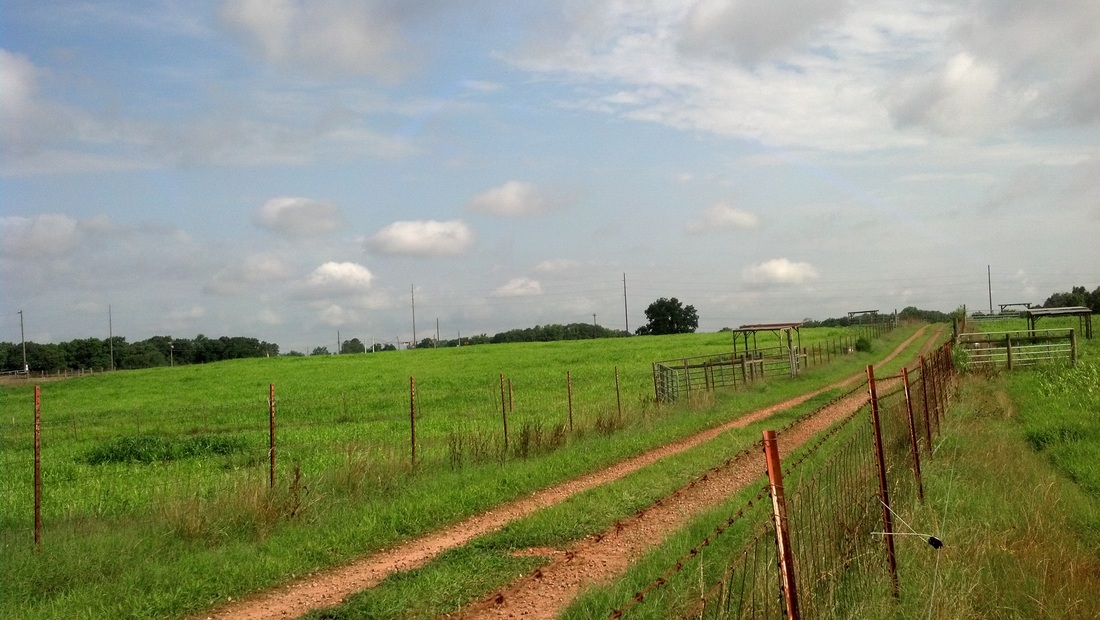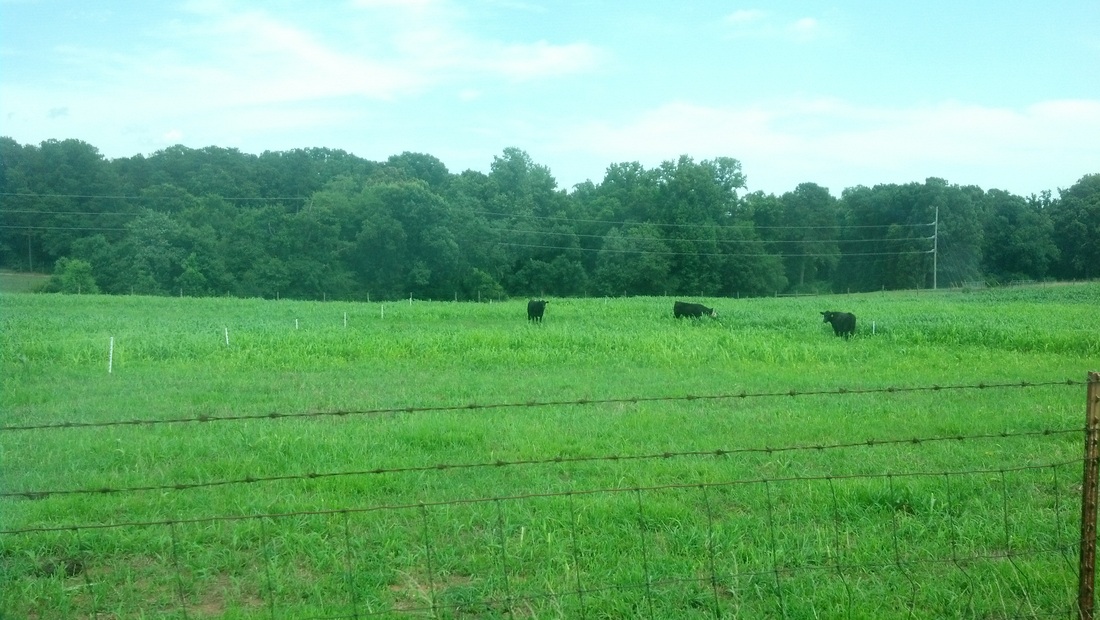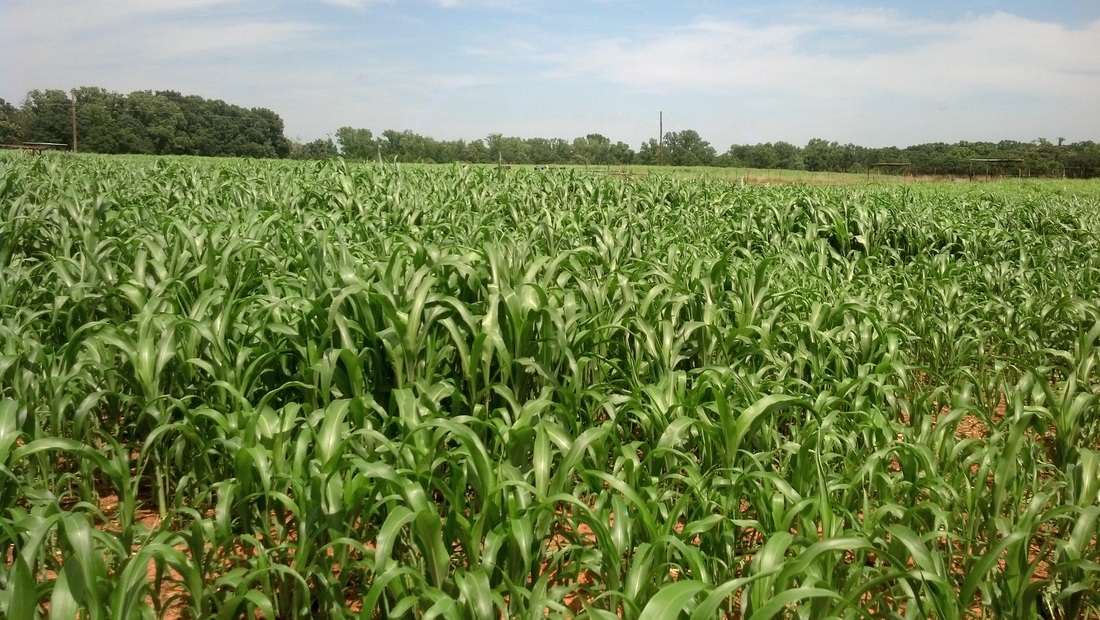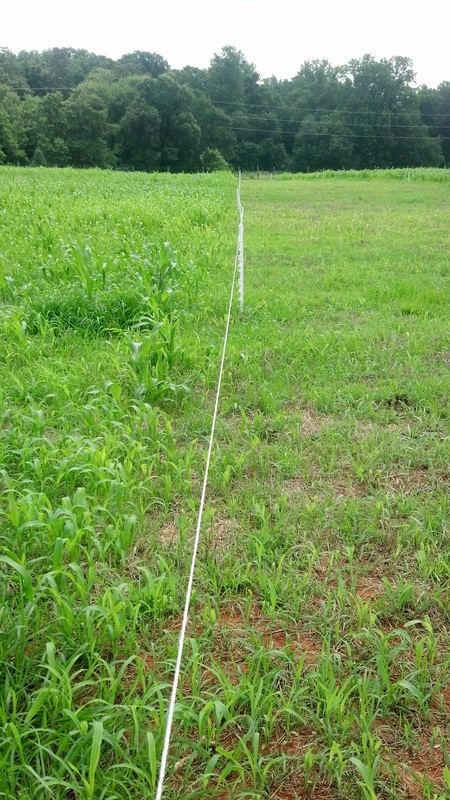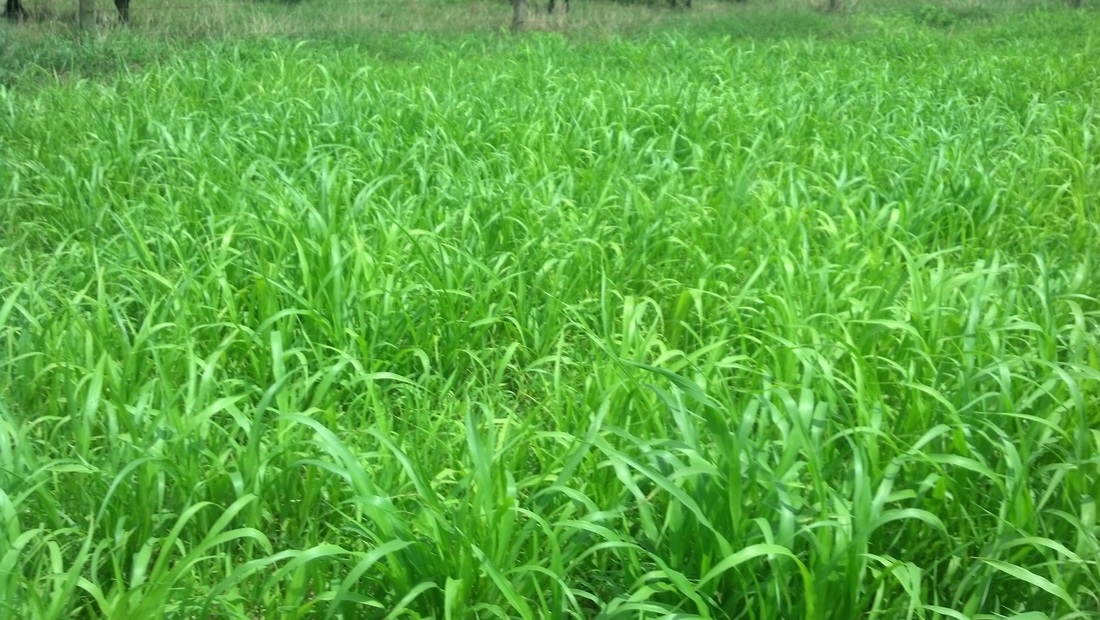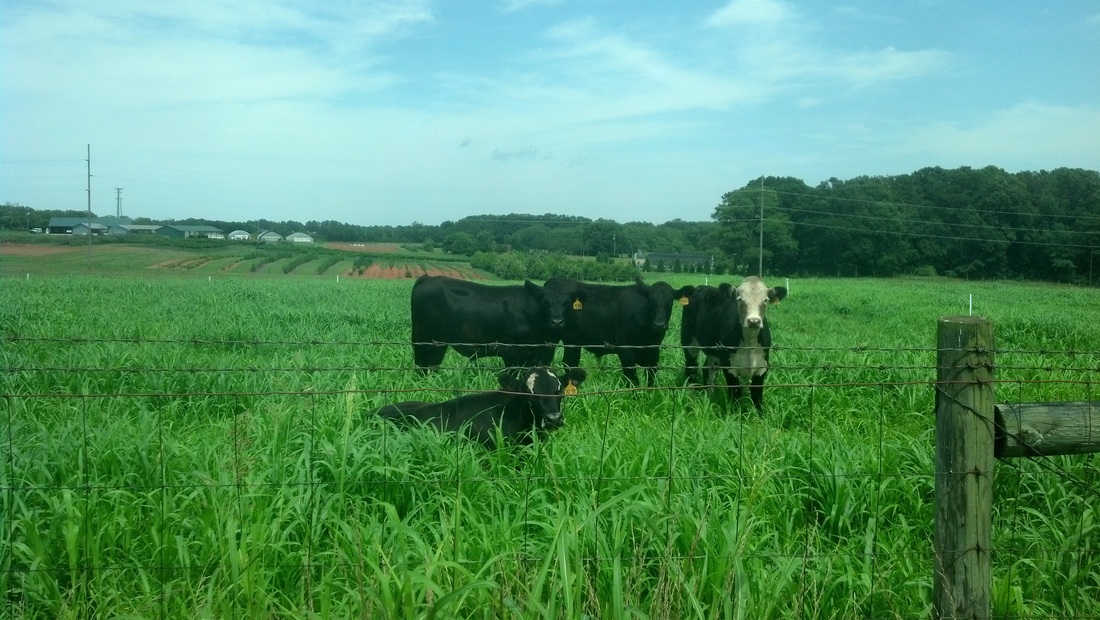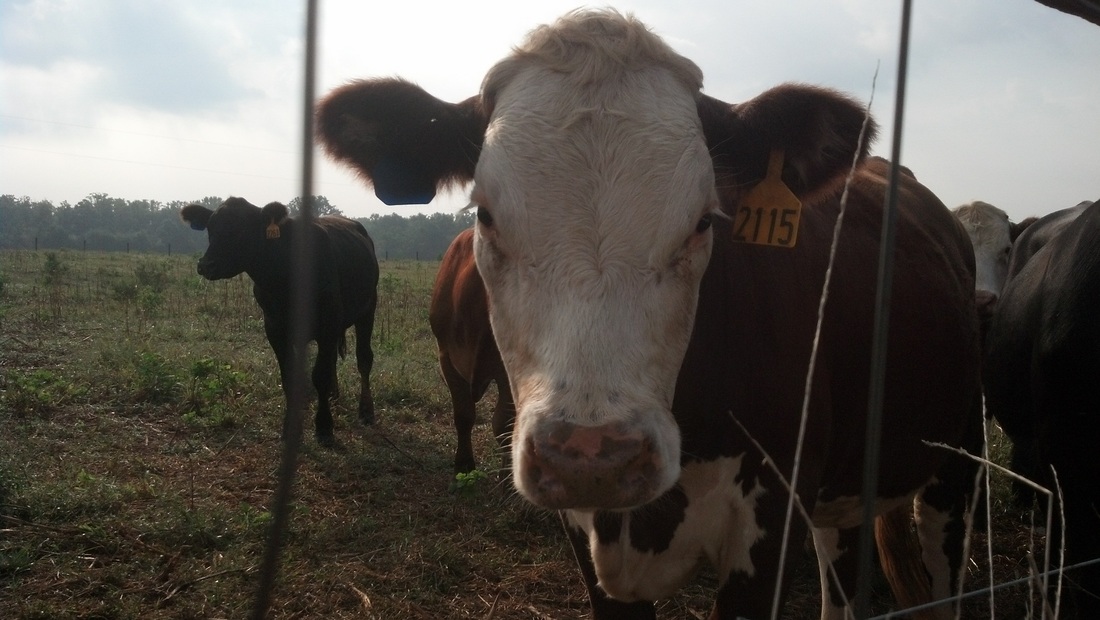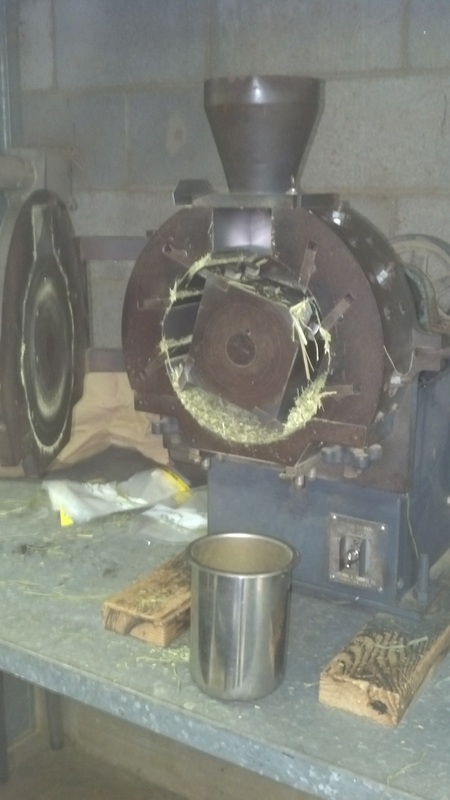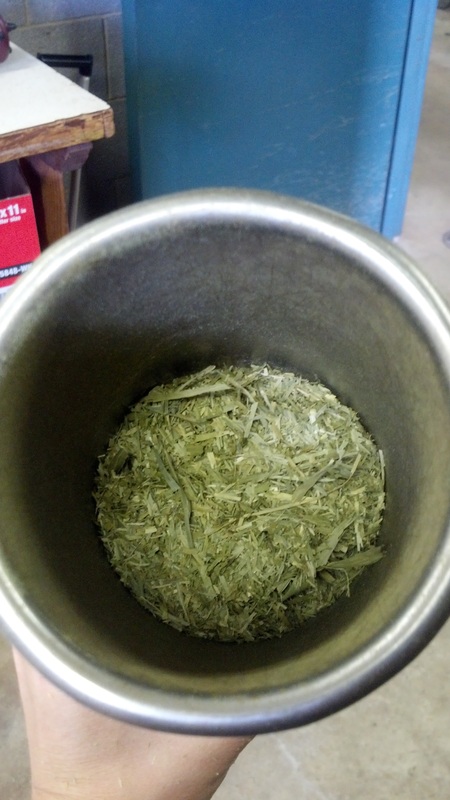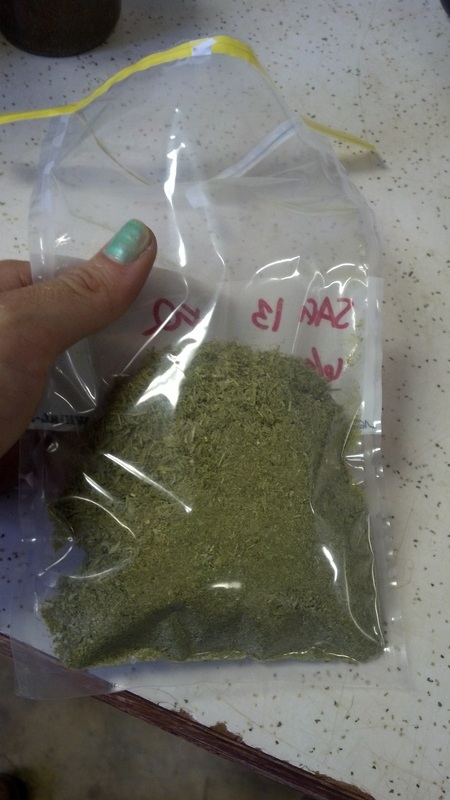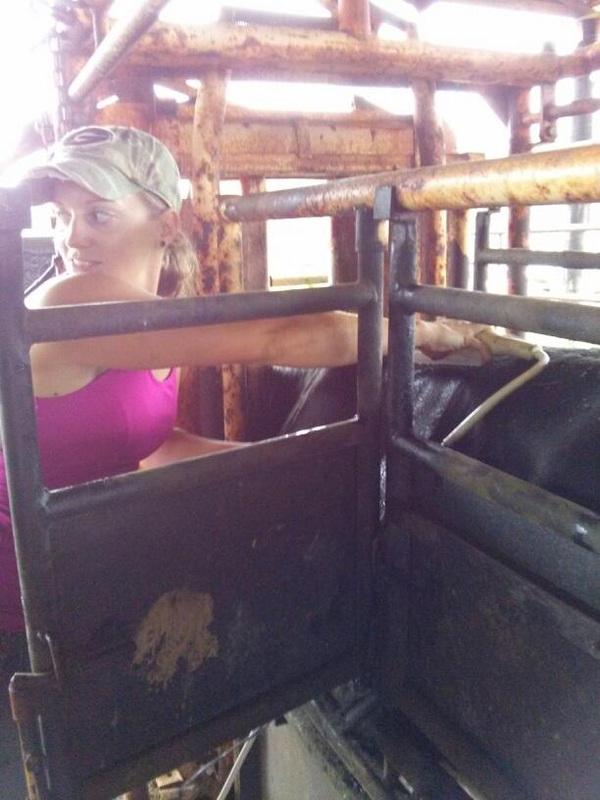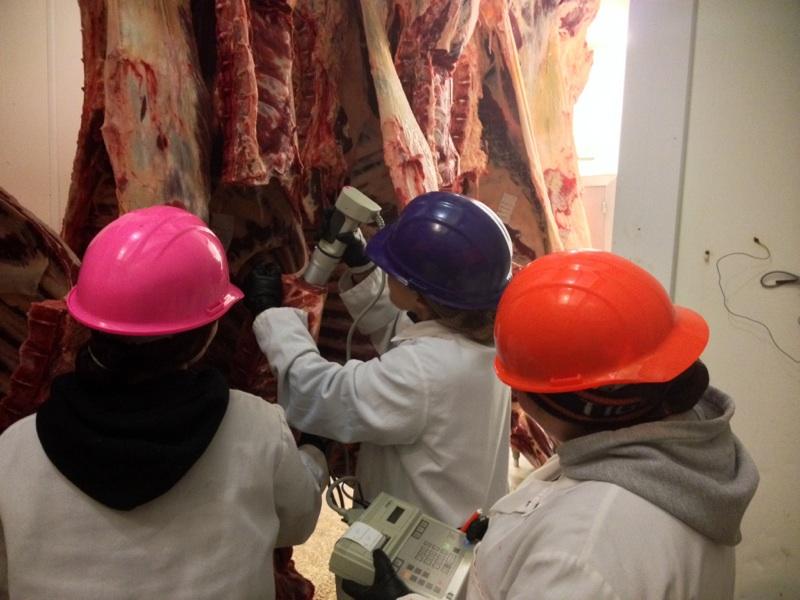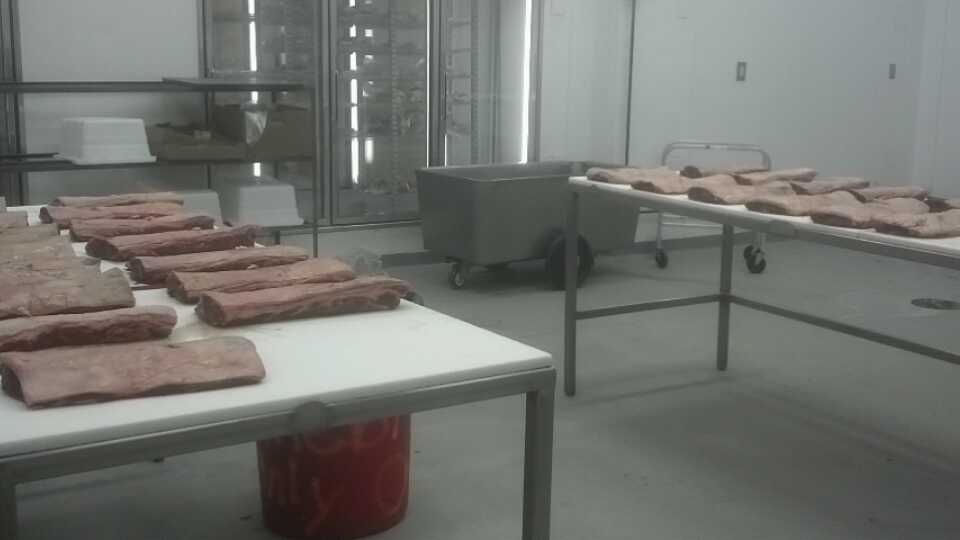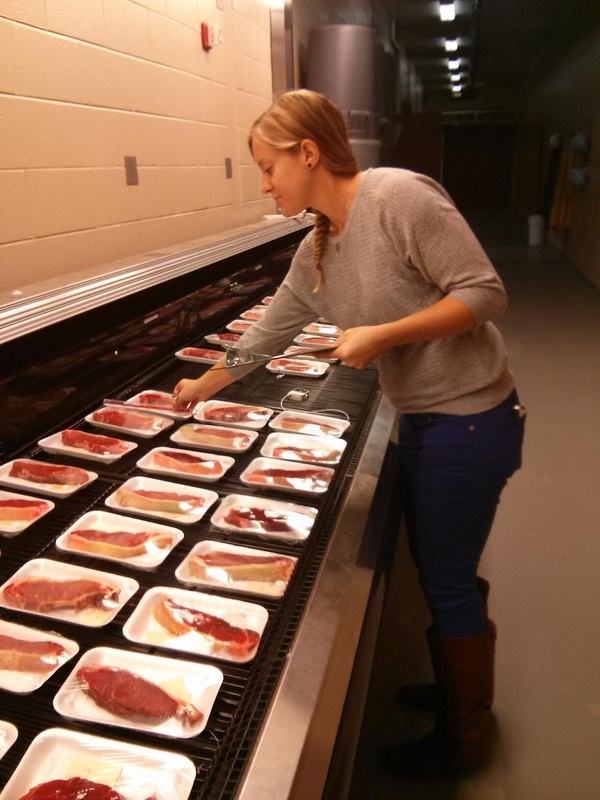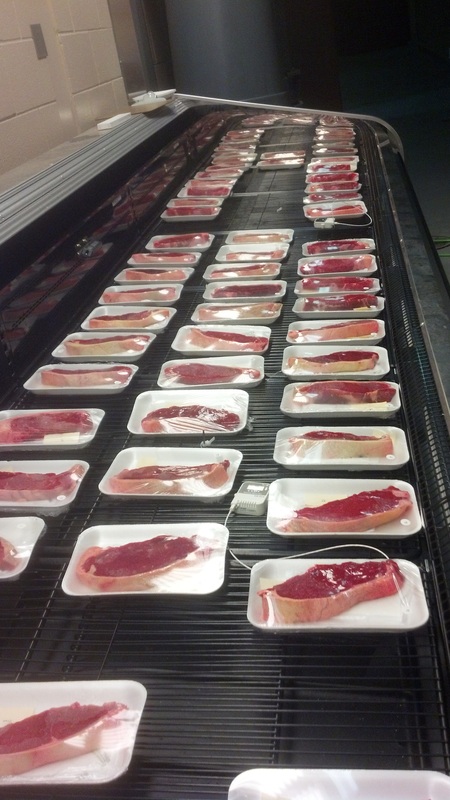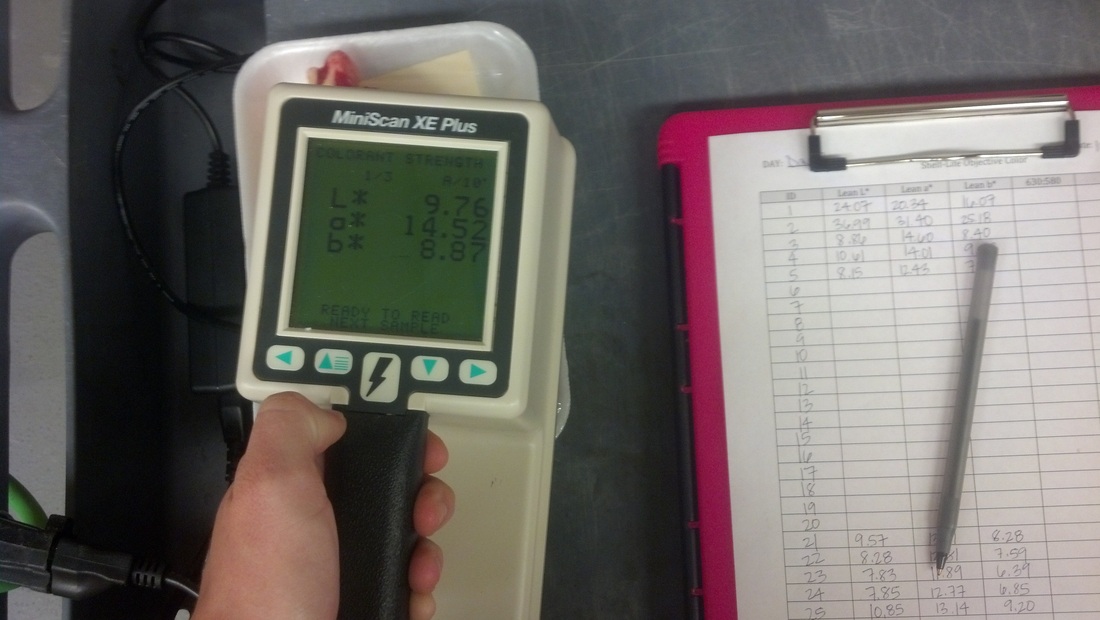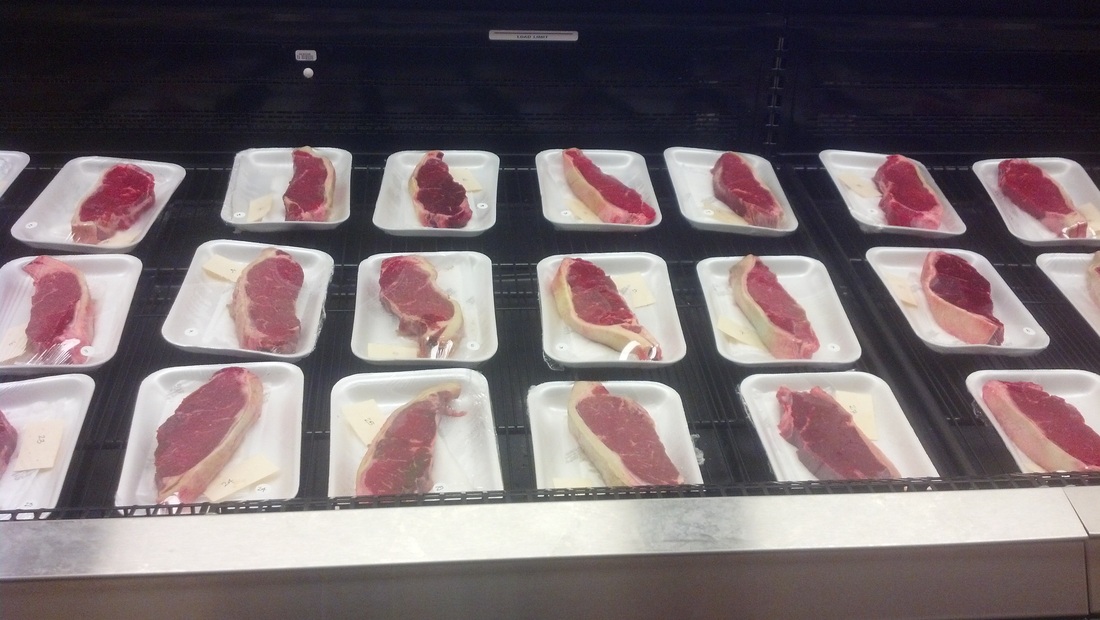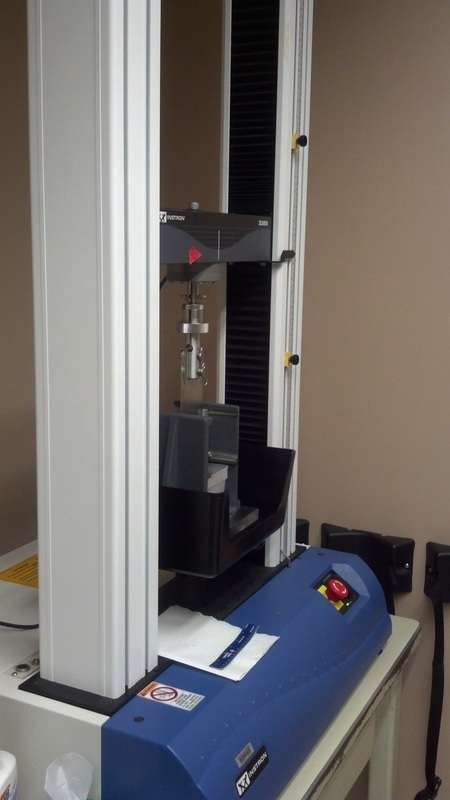Project conducted by Mrs. Elyse Ford.
Four warm season annual forages were evaluated over an 84-d grass-finishing system for beef cattle. Sixteen 0.73 ha pastures were blocked by previous management and assigned to one of four treatments: ‘Tifleaf 3’ pearl millet (PM; Pennisetum glaucum), ‘Tifleaf 3’ pearl millet and ‘Red River’ crabgrass (PMCG; Digitaria sanguinalis), ‘Honey Graze BMR’ brown midrib sorghum sudangrass (BMR SxS; Sorghum bicolor xS. bicolor ssp. drummondii) and ‘Sugar Grazer’ sorghum sudangrass (SxS; Sorghum bicolor xS. bicolor ssp. drummondii). Thirty-two cross-bred beef steers (avg BW 386 ± 9.5 kg) were stratified by weight and randomly assigned to a pasture. BW was recorded on d 0 and 84. Additionally, ultrasound measurements of ribeye area, 12th rib fat thickness, intramuscular fat, and rump fat thickness were recorded on d 0 and 84. All pastures were managed for rotational stocking. Forage samples for mass and nutritive value were collected on d 0 and every 14 d thereafter. On d 86, all animals were harvested, and carcass data was collected for yield and quality determination as well as objective carcass fat and lean scores (CIE L*, a*, b*) and subjective fat and lean scores. Forage mass was not influenced by treatment during the summer season (P = 0.90). There were no treatment differences in steer ADG (P = 0.42) or ultrasound data of predicted carcass traits (P ≥ 0.34). Carcasses from PMCG had a greater overall maturity (A80) than SxS (P < 0.01; A60) and PM (P = 0.03; A70) due to PMCG carcasses having a greater lean maturity (P < 0.01) than carcasses from other treatments. There were no differences between treatments for carcass marbling scores (P > 0.12). Subjective fat color readings of SxS carcasses were more yellow in color than all other treatments (P ≤ 0.03). Carcasses from steers grazing all treatments had similar HCW, %KPH, REA, 12th rib fat thickness, and yield grade (P > 0.17). No treatment differences were observed for objective color scores of lean (P > 0.50) and fat (P > 0.26), or subjective lean color scores (P > 0.34). These initial data indicate the four forage systems can be used in warm season annual forage finishing programs without affecting animal performance and having minimal effects on carcass characteristics. Further data will be collected and analyzed, assessing the effects of treatment on sensory characteristics, shelf life (evaluating lipid oxidation, subjective and objective color change), and the composition of samples. Sample composition will be evaluated through measurements of percent moisture, protein and fats, as well as fatty acid composition.

